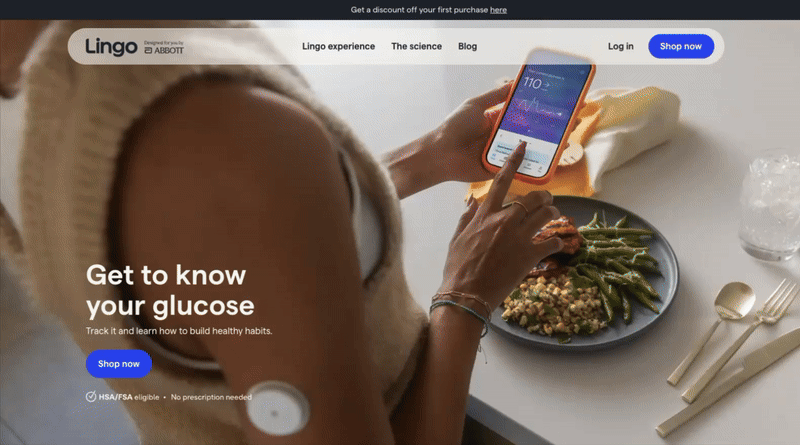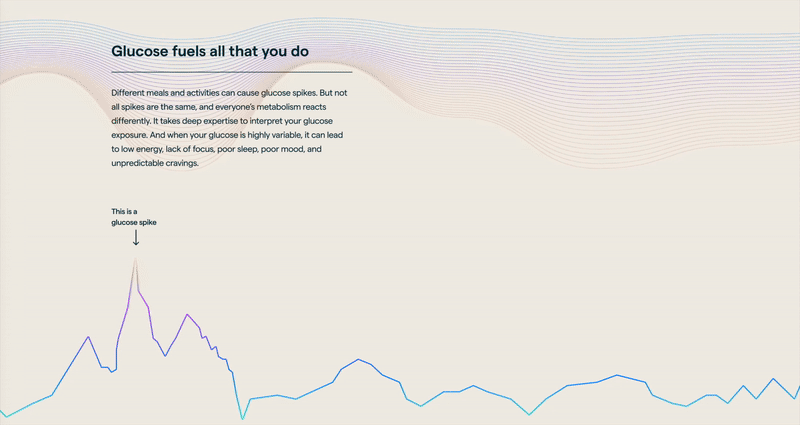Revolutionizing Wellness with a $1.5B+ Glucose-Monitoring App Design
Role: As the Product Design Lead, I defined the future-state vision with C-Suites, coached and mentored my client counterparts and junior designers (team of 7), built a scalable design system, designed hi-fidelity wireframes, worked closely with developers to Design QA, conducted qualitative and quantitative user feedback, and launched the product
TL;DR
This was McKinsey’s largest global business build of 2023. We partnered with a major MedTech company to help build their first consumer wearable product that translates data from a physical continuous glucose monitor (CGM) to an app. They were traditionally a B2B company and needed help to shift to becoming a B2C company. I led the app design team take the product from 0 to 1. We designed for 200+ edge cases, across 300+ screens and worked closely with developers to build, QA and launch the product in 2 large European markets with a fast-follow in the US. Additionally, I led a future-state visioning workshop with C-Suite executives to define the next stage of the product.
The Impact
The project opened up a $1.5B+ market, creating 200 jobs, 500+ customer touchpoints through the end-to-end delivery of 3 products: a direct-to-consumer website to market the app, the app, and a go-to-market strategy.
72% (n=360) of beta users indicated positive experience (4.5 out of 5) when onboarding the app, including ease of use connecting the wearable device with the app. 65% (n=325) of beta users shared a very positive experience (5 out of 5) with the delivery and packaging.
The App
This project was extremely complex due to 3 key reasons:
i) A highly regulated environment: given that the CGM is a medical device, the app and website were subjected to heavy FDA regulations which created additional constraints on the designs
ii) A multifaceted (and often, fragmented) stakeholder ecosystem: the clients had brought together a myriad of third-party and in-house teams (regulatory, science, brand, UX, and engineering) to work on this product which made cross-team collaboration particularly challenging
iii) Competing (and sometimes, conflicting) priorities of each team: while the design team was solving for seamless UX, the engineering team was solving for build feasibility, and the science team was solving for precise representation of glucose science
My role was to advocate for strong UX without compromising on the clarity of the science, distinctiveness of the brand while ensuring the tech feasibility of the build. I translated research into quick prototypes to test and learn with users per sprint. I took a native-first data visualization approach to achieve simple sophistication and documented 200+ edge cases to ensure holistic documentation handoff to our engineering teams.
The Website
In addition to the app, we designed an e-commerce site for the marketing and sale of the app. We worked closely with the go-to-market teams to define the pricing and subscription model and tested the “customer voice” with users. What we found was that users wanted to i) be assured that the actual installing of the CGM on their arms would be pain-free, ii) understand the health implications of monitoring their glucose and iii) receive coaching and advice to improve their overall lifestyles. We tailored the messaging on the e-commerce site to cater to the needs of our users.
As this was our client’s first consumer product, we had to built a scalable and responsive design system from to work across native app and a mobile-responsive website.





